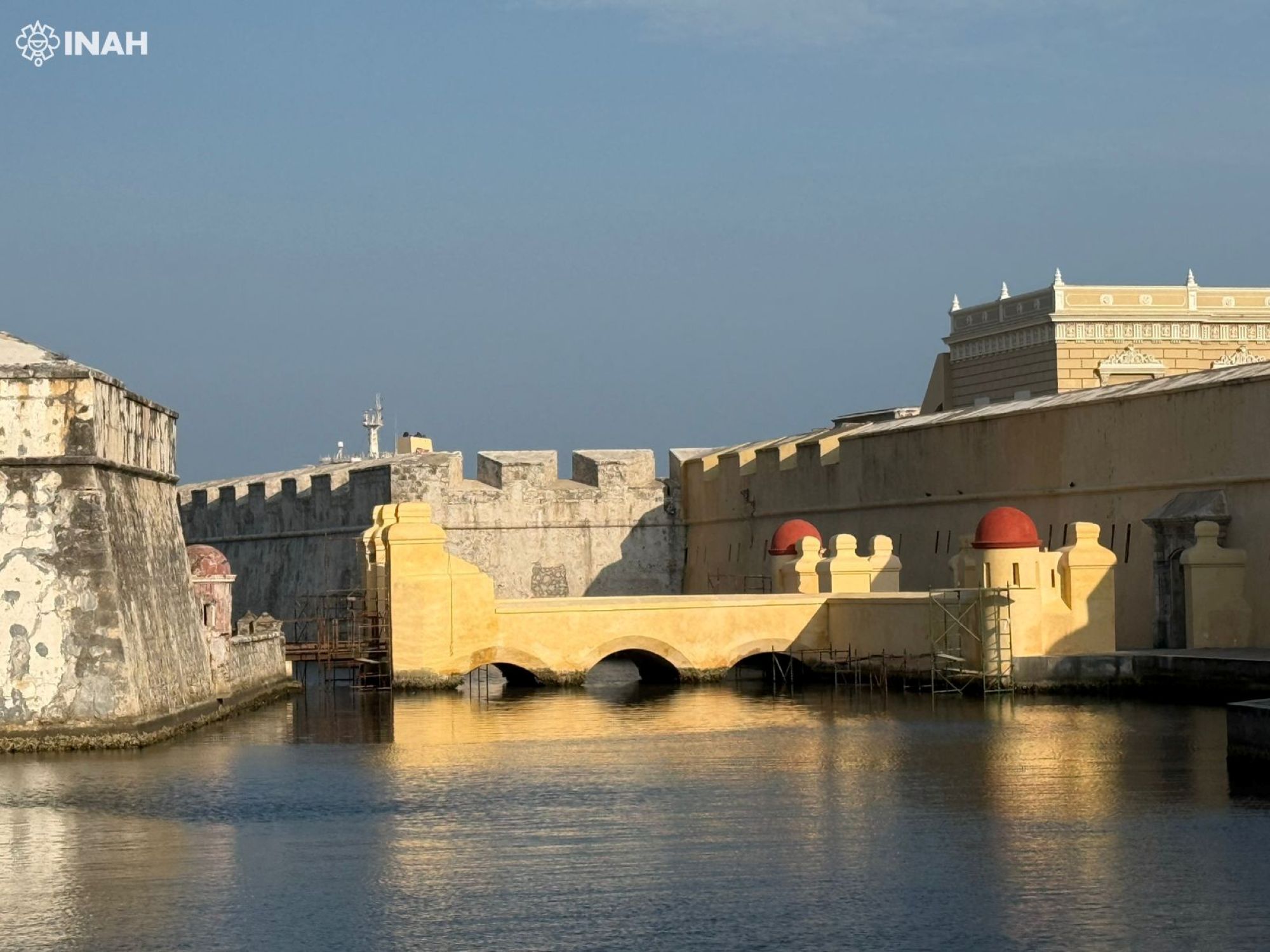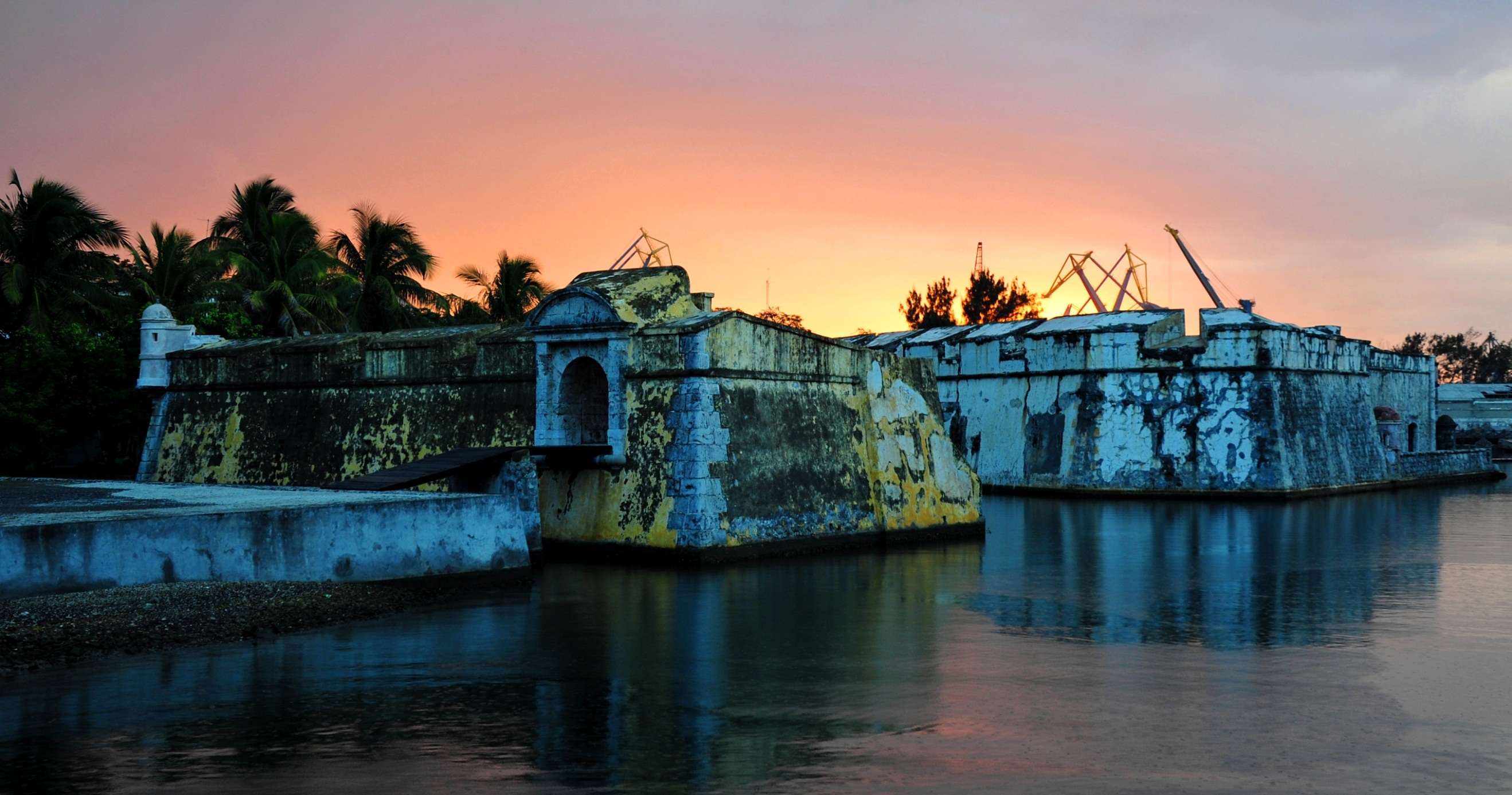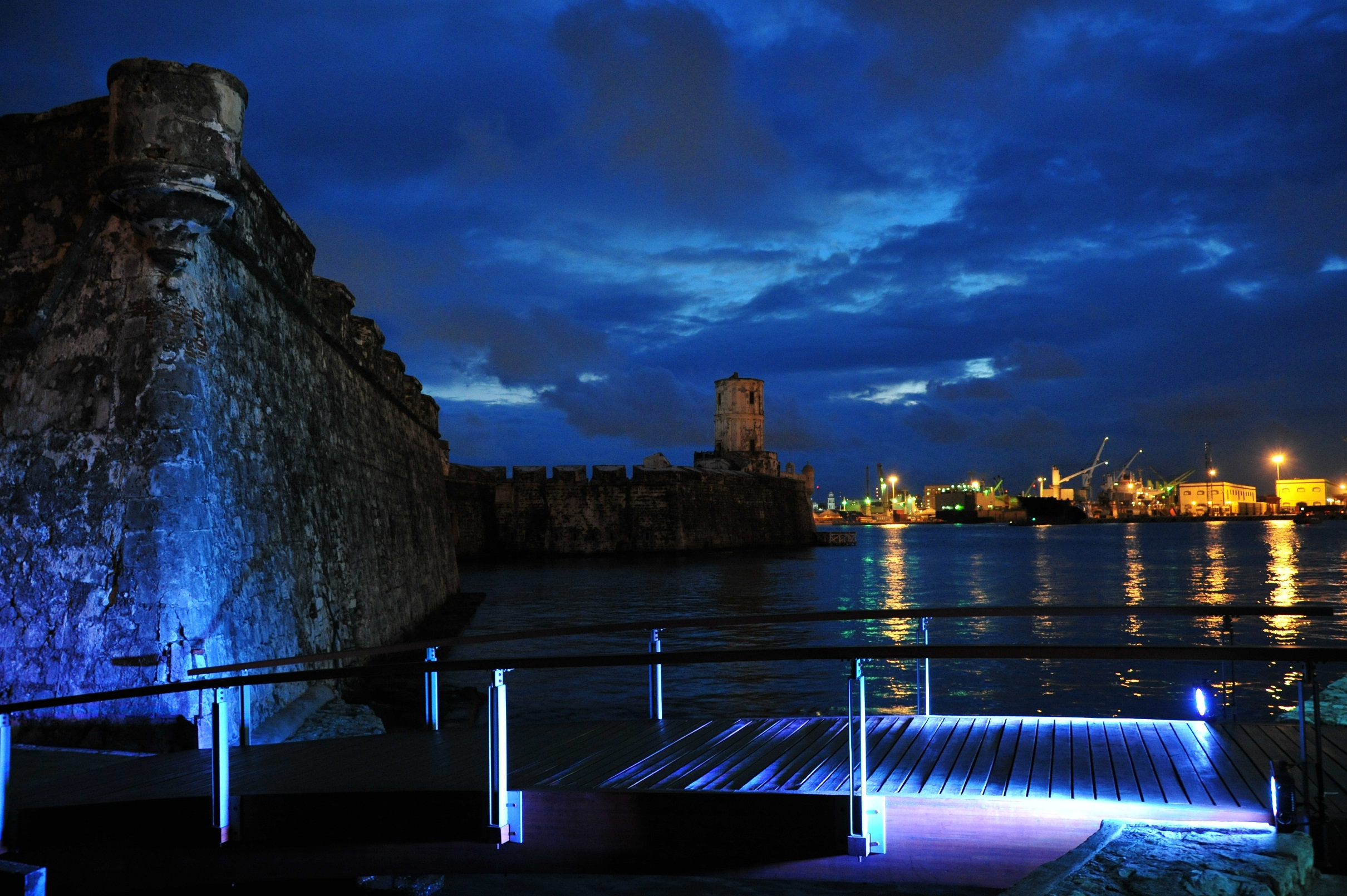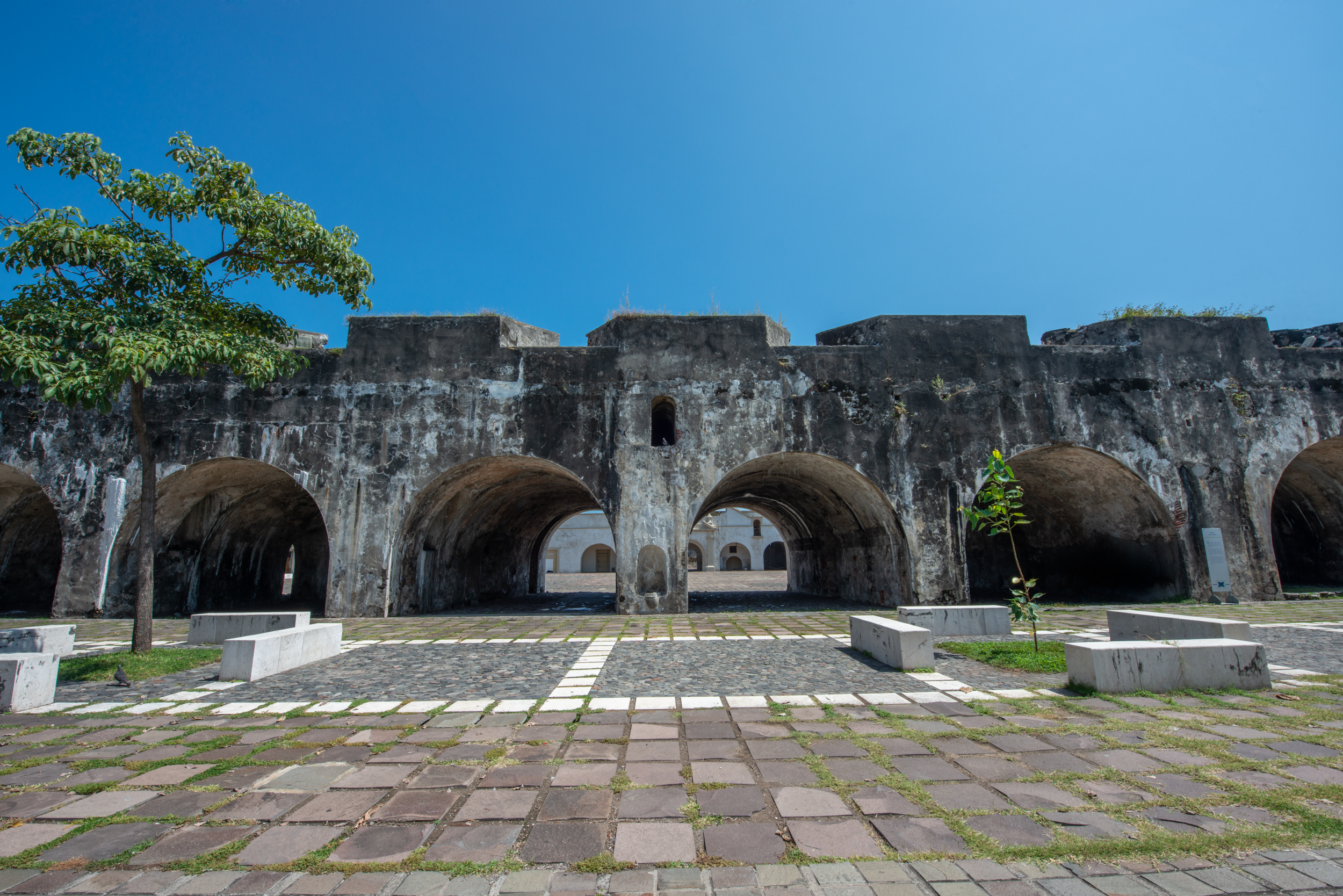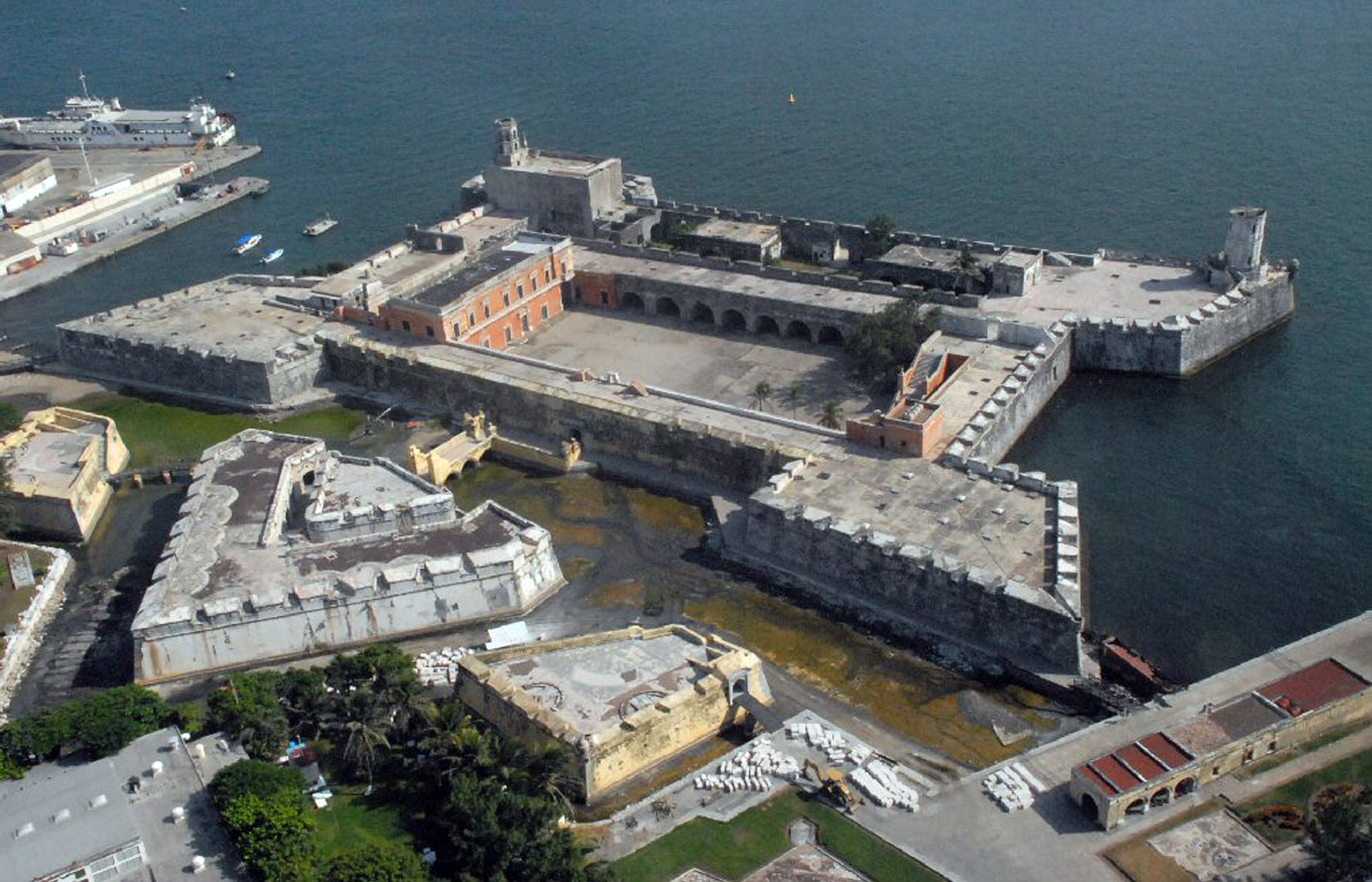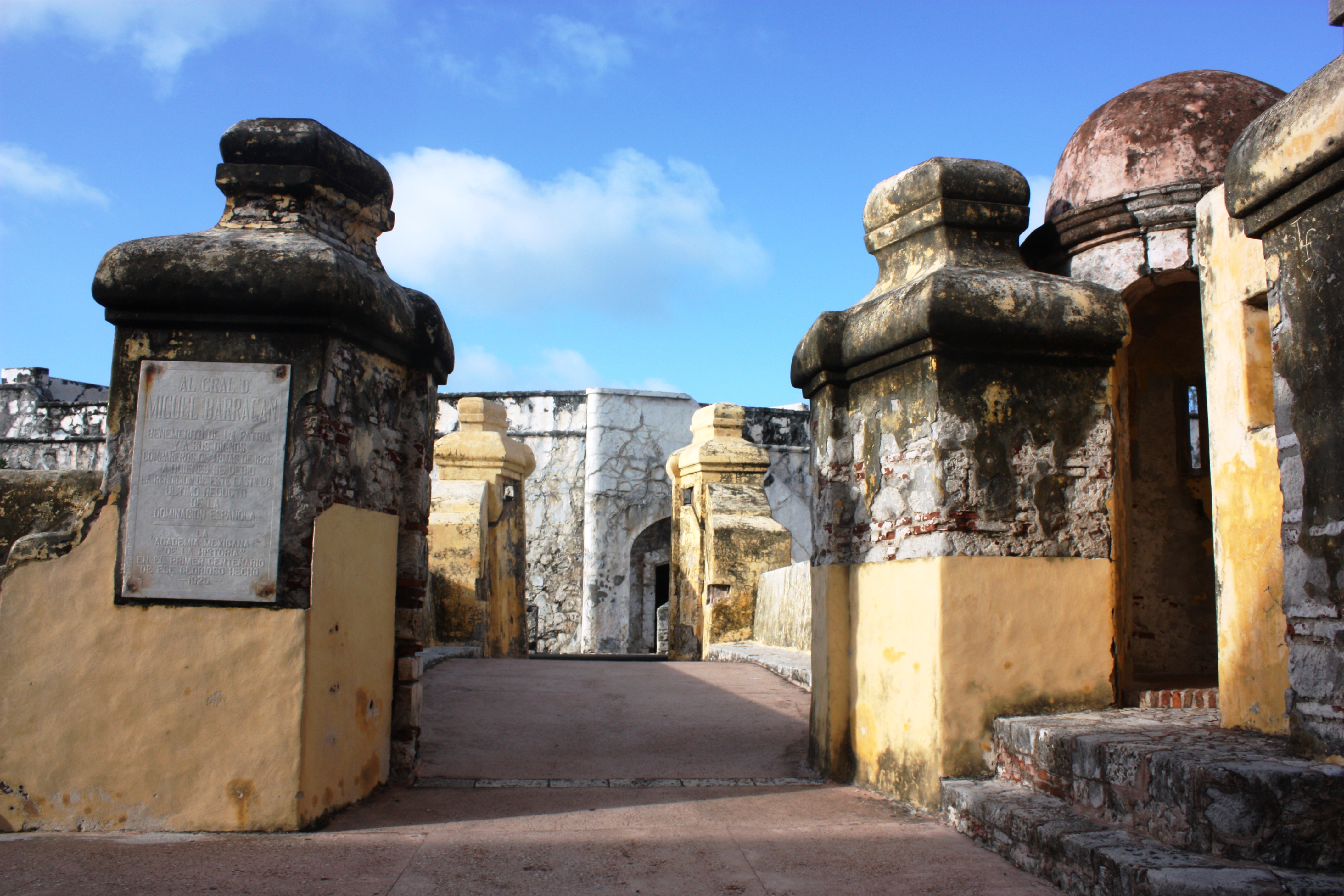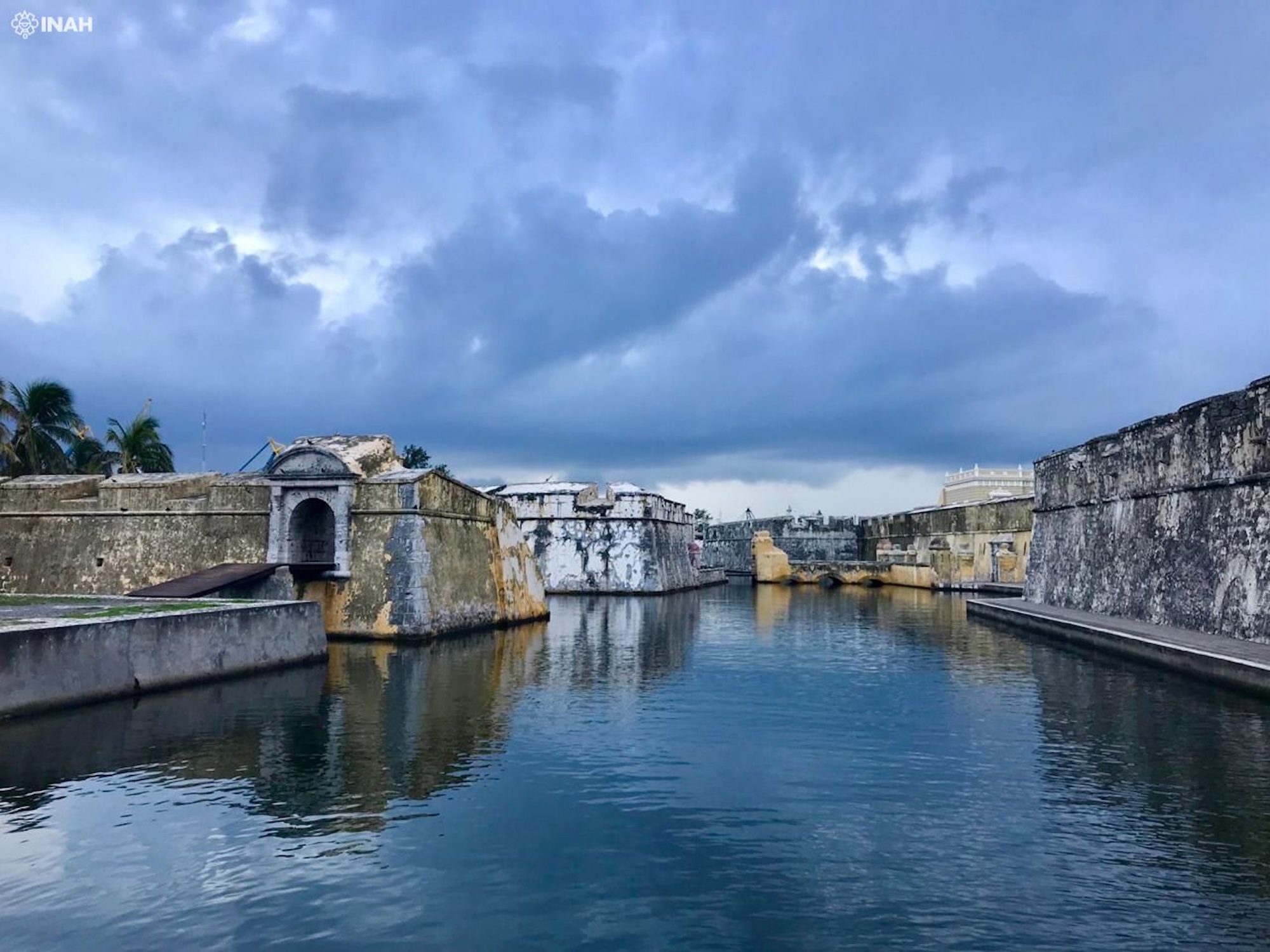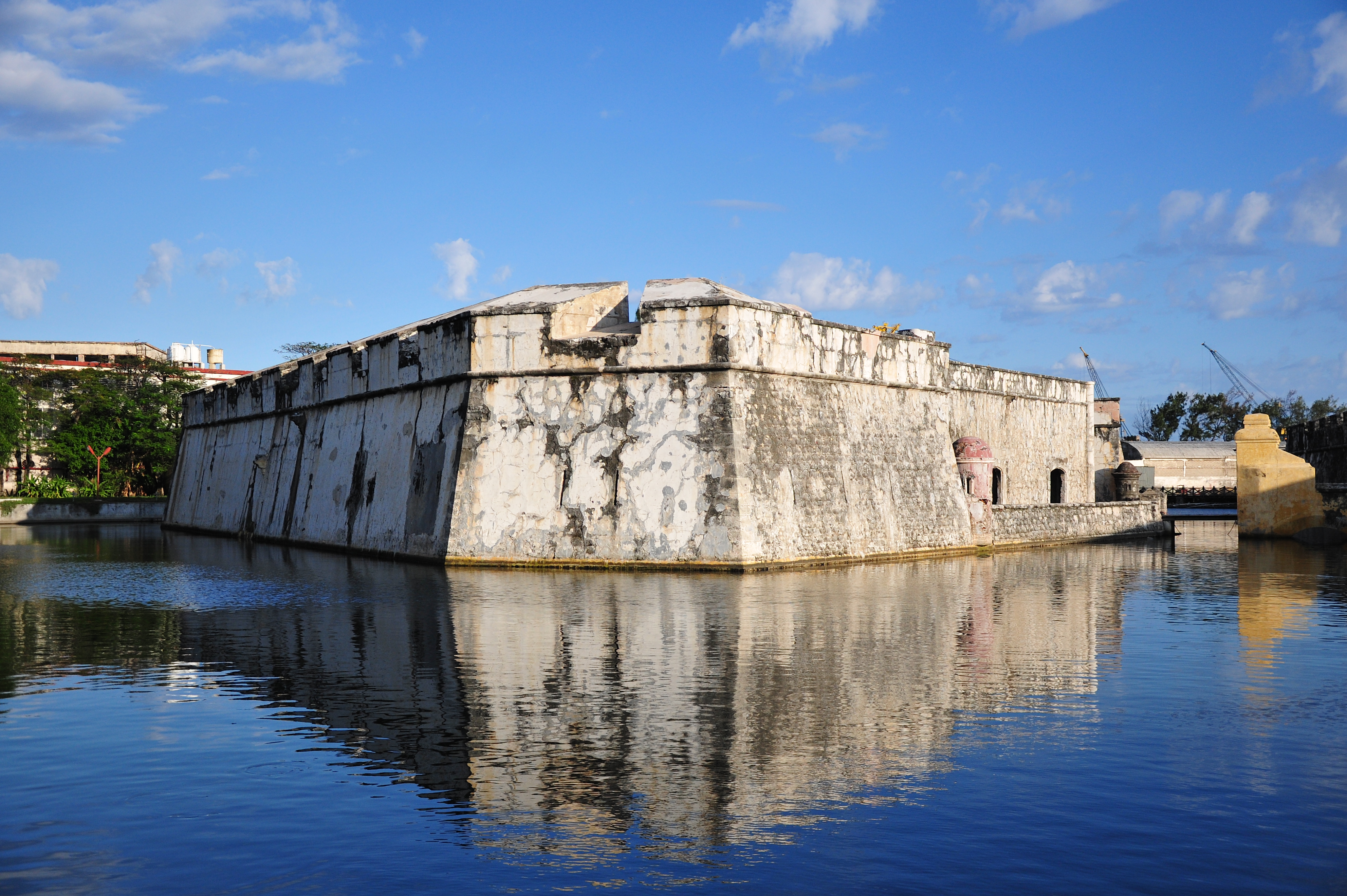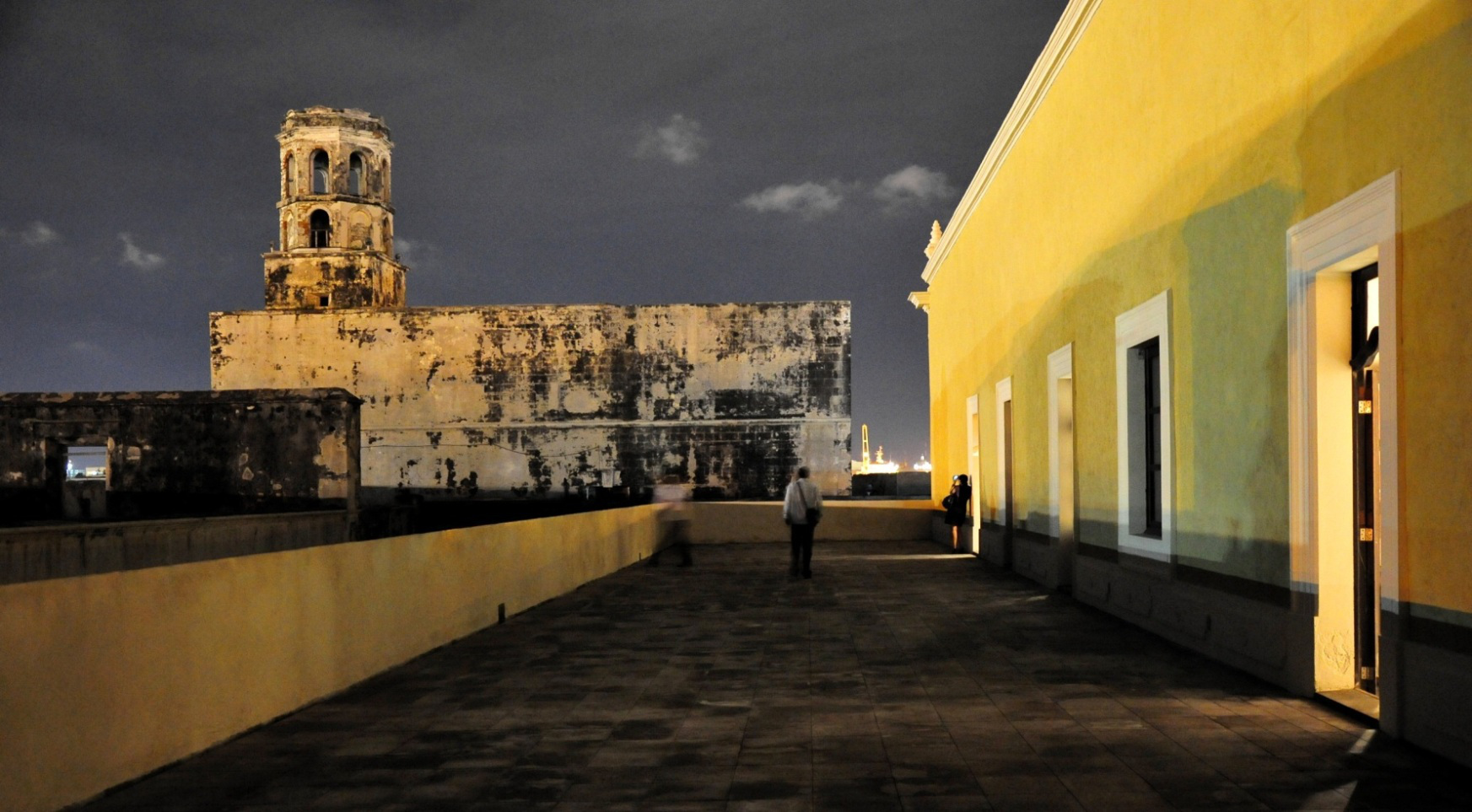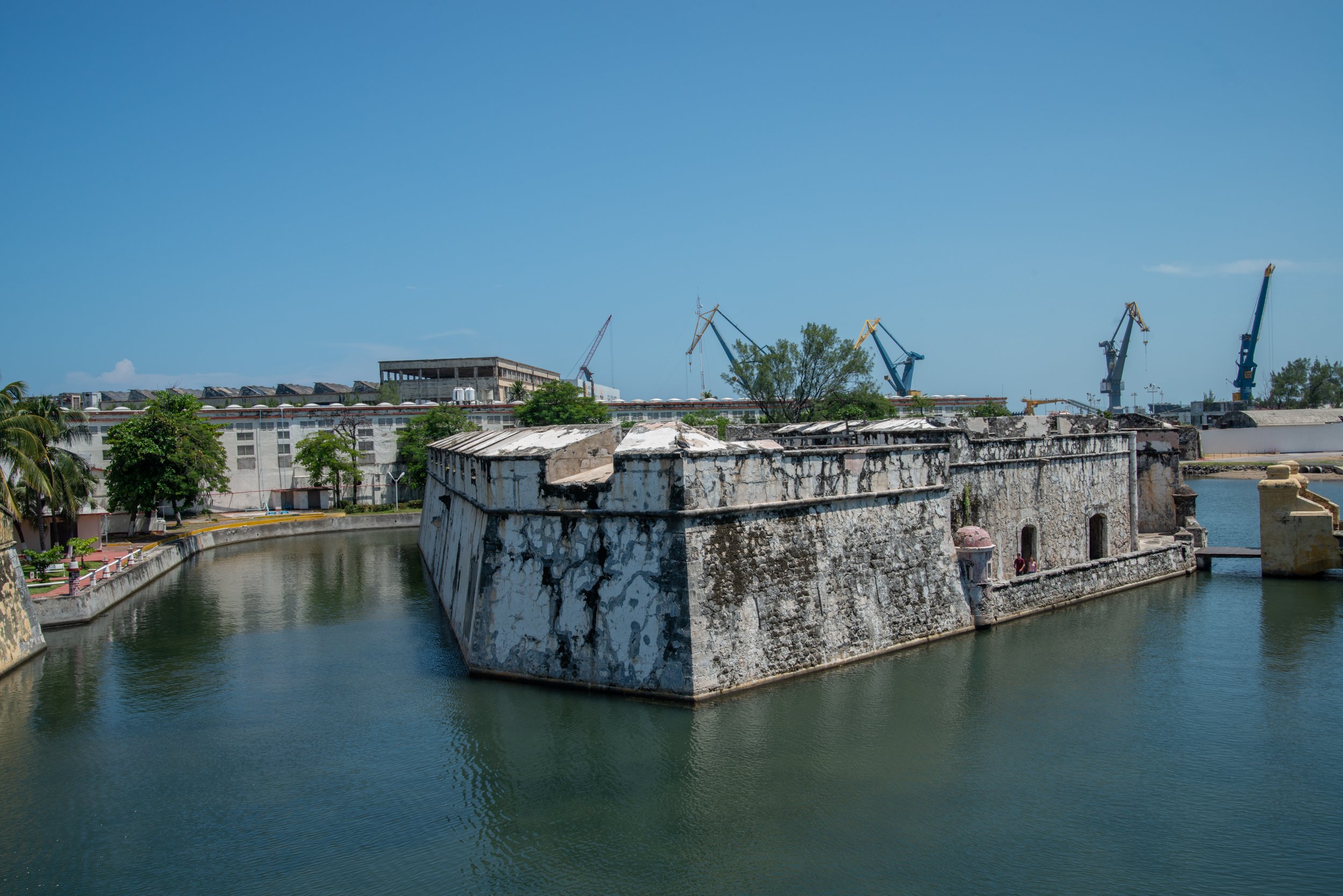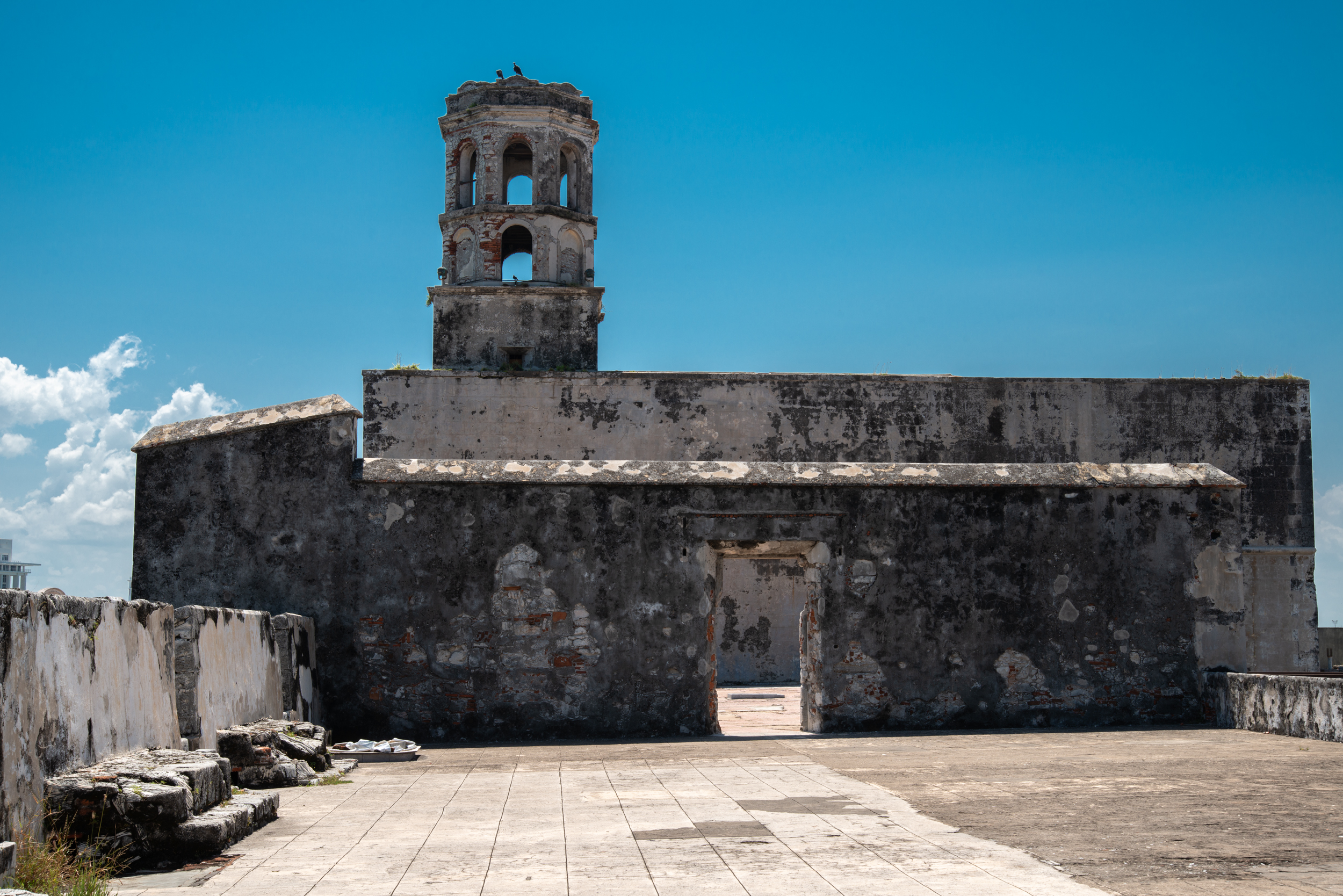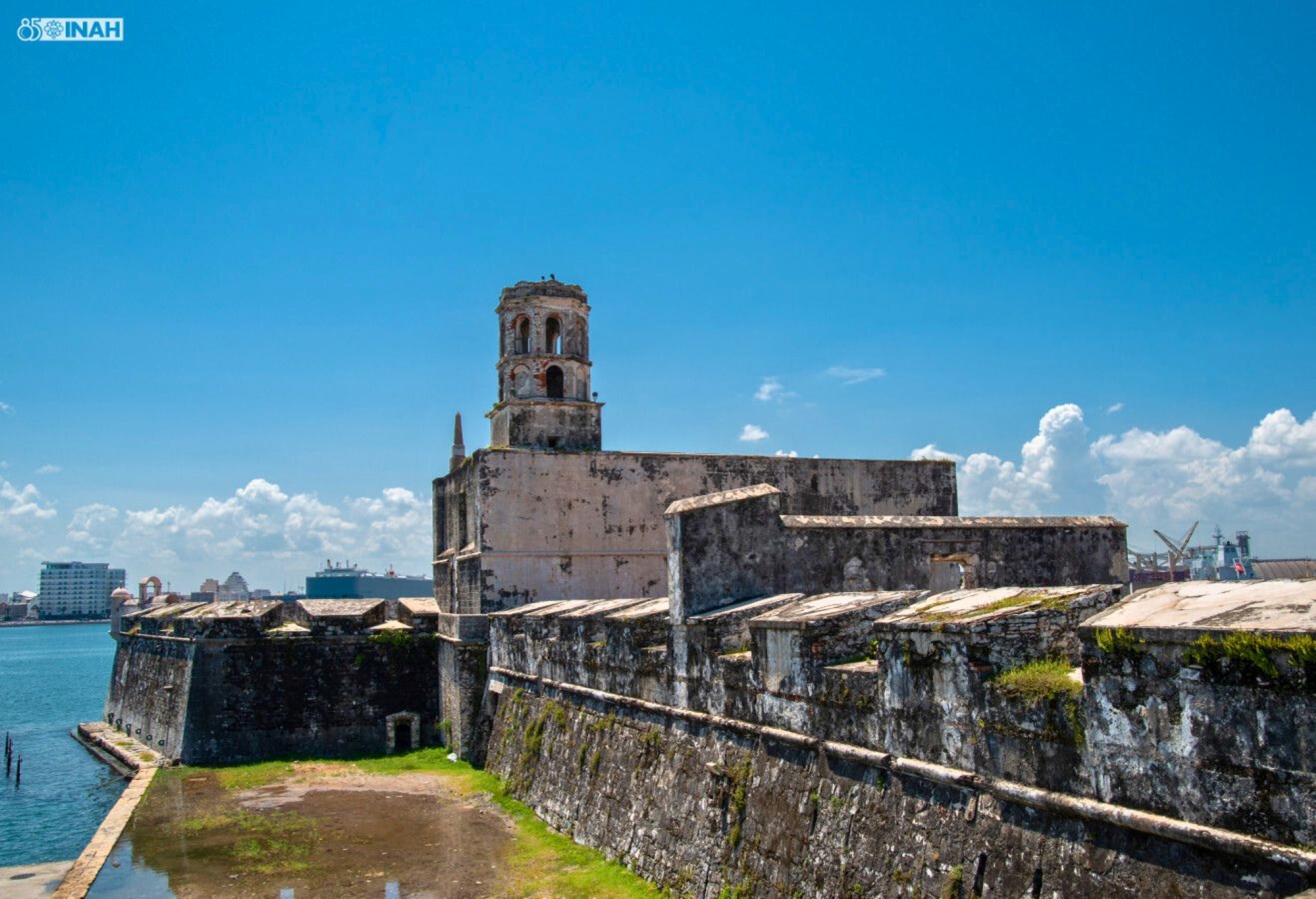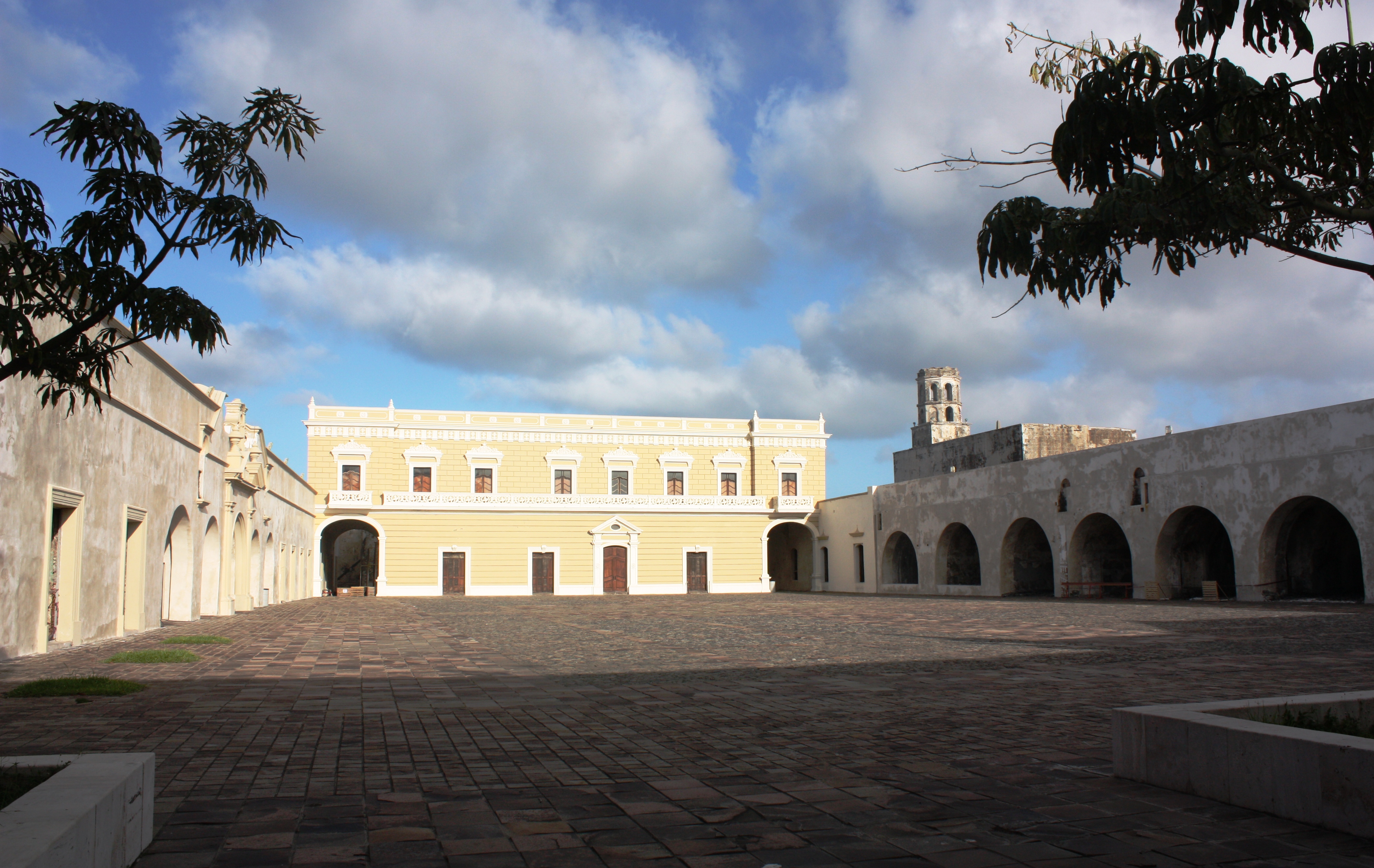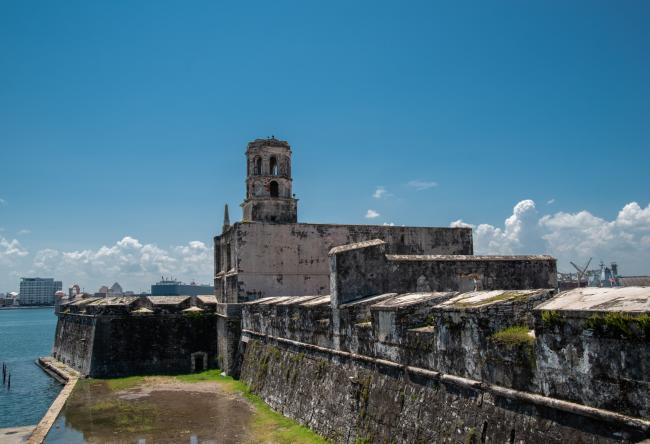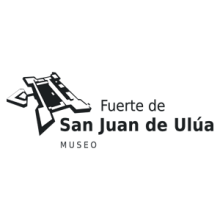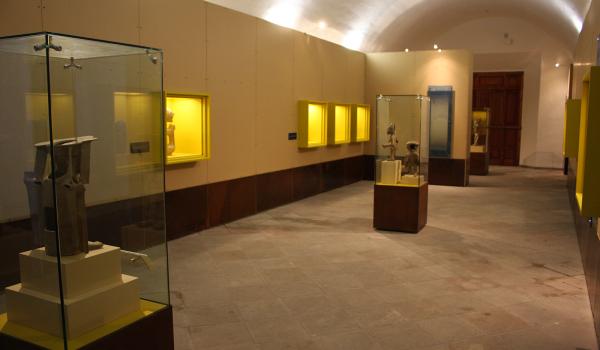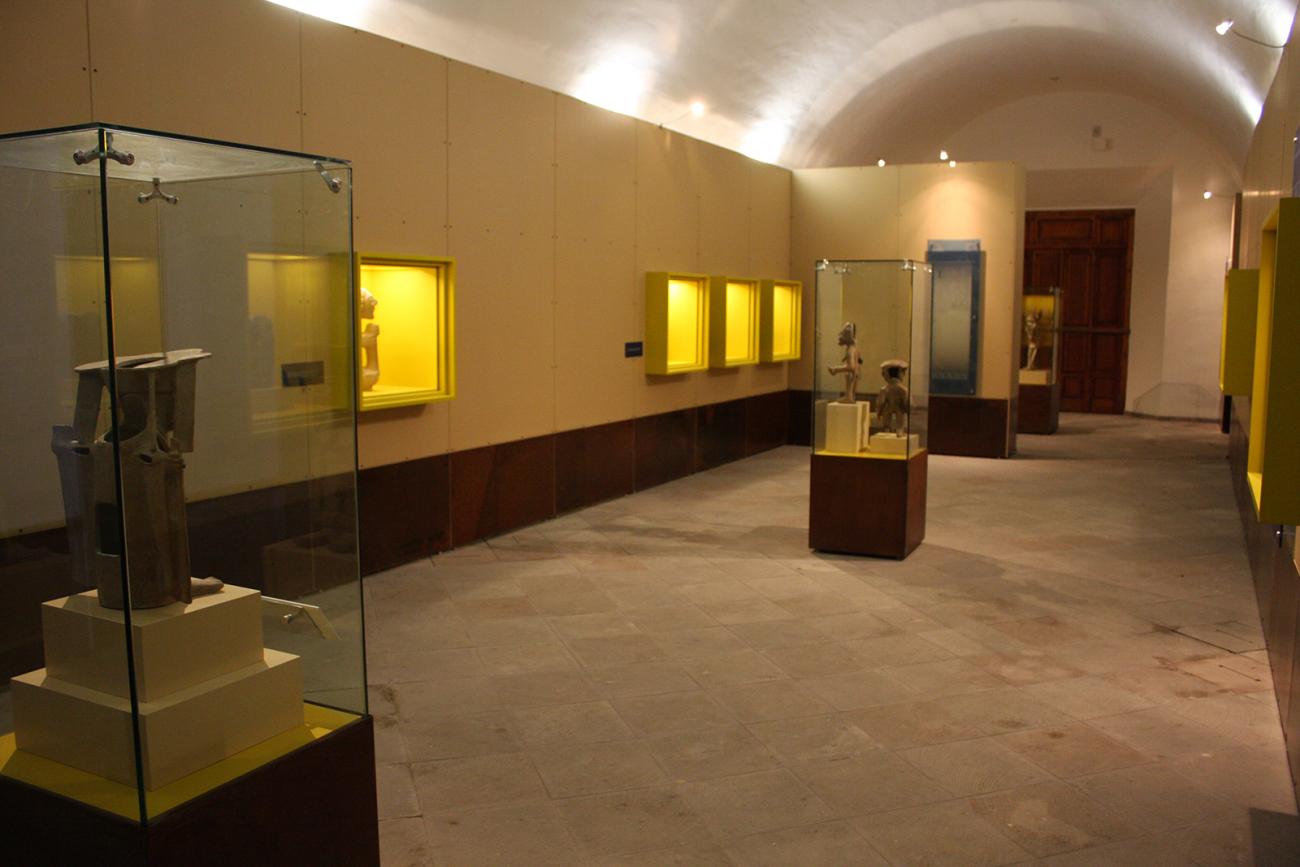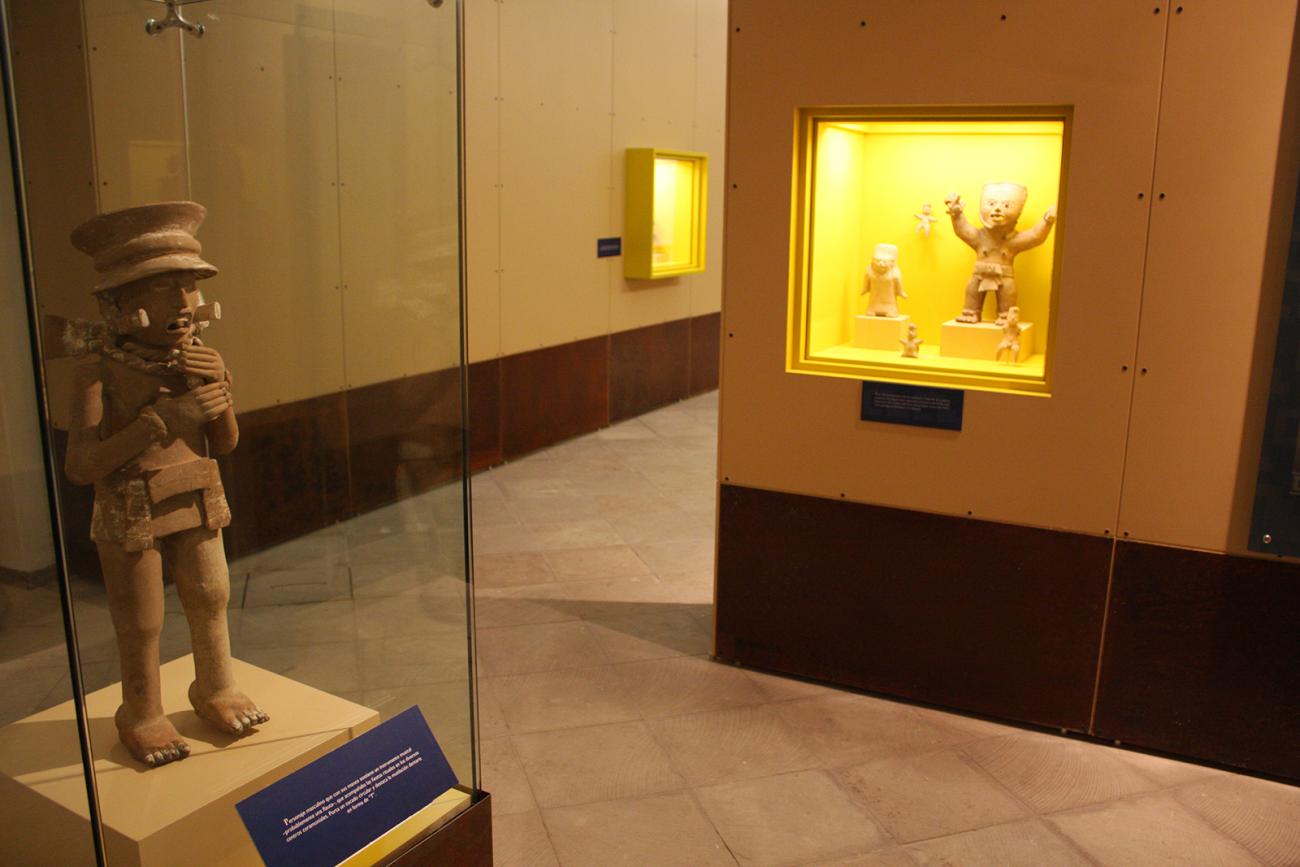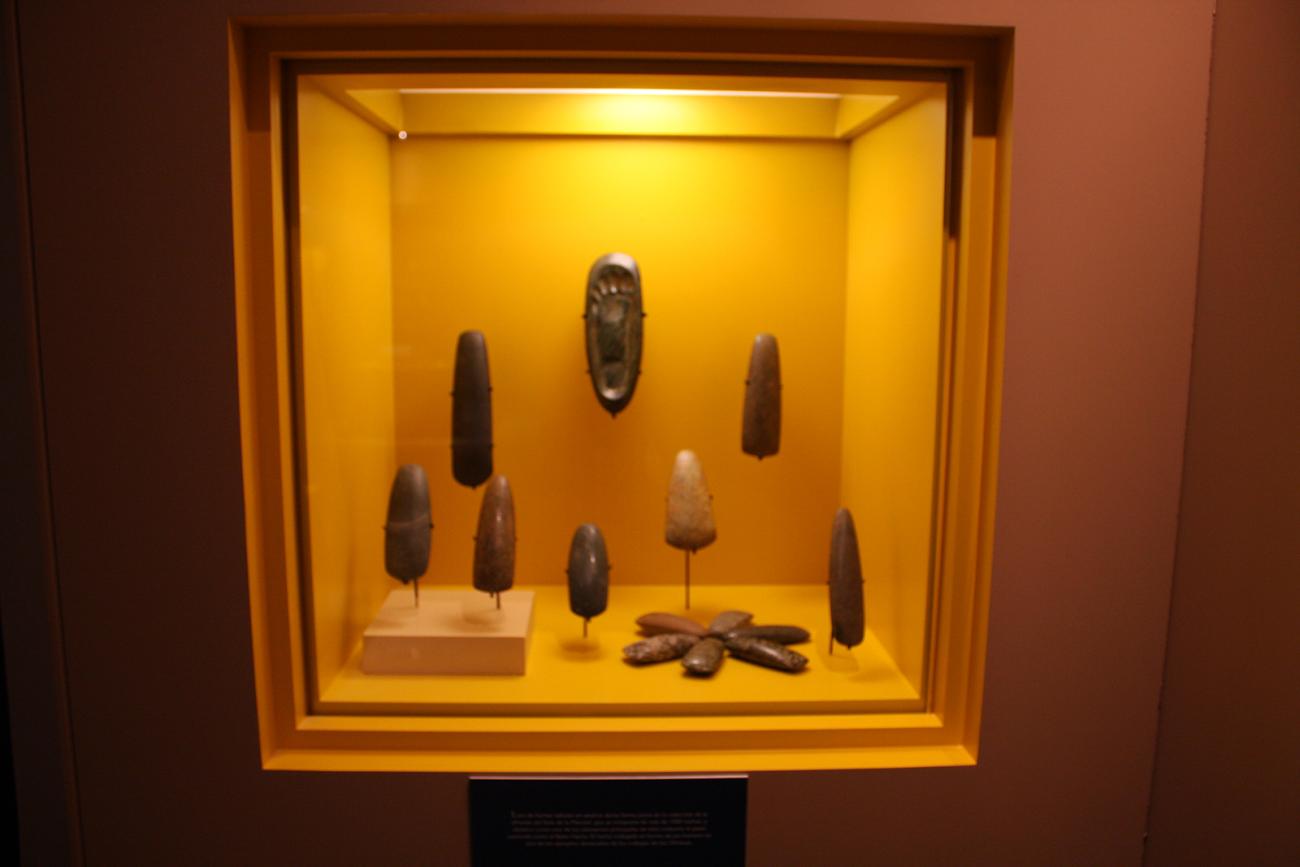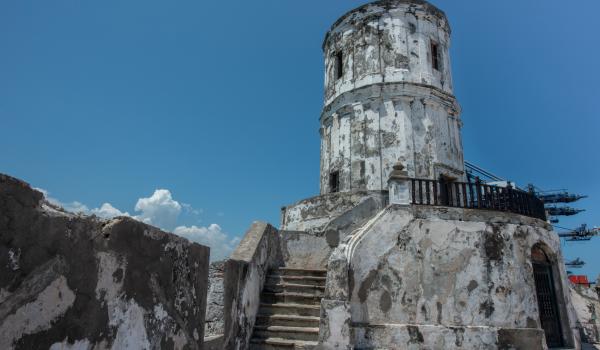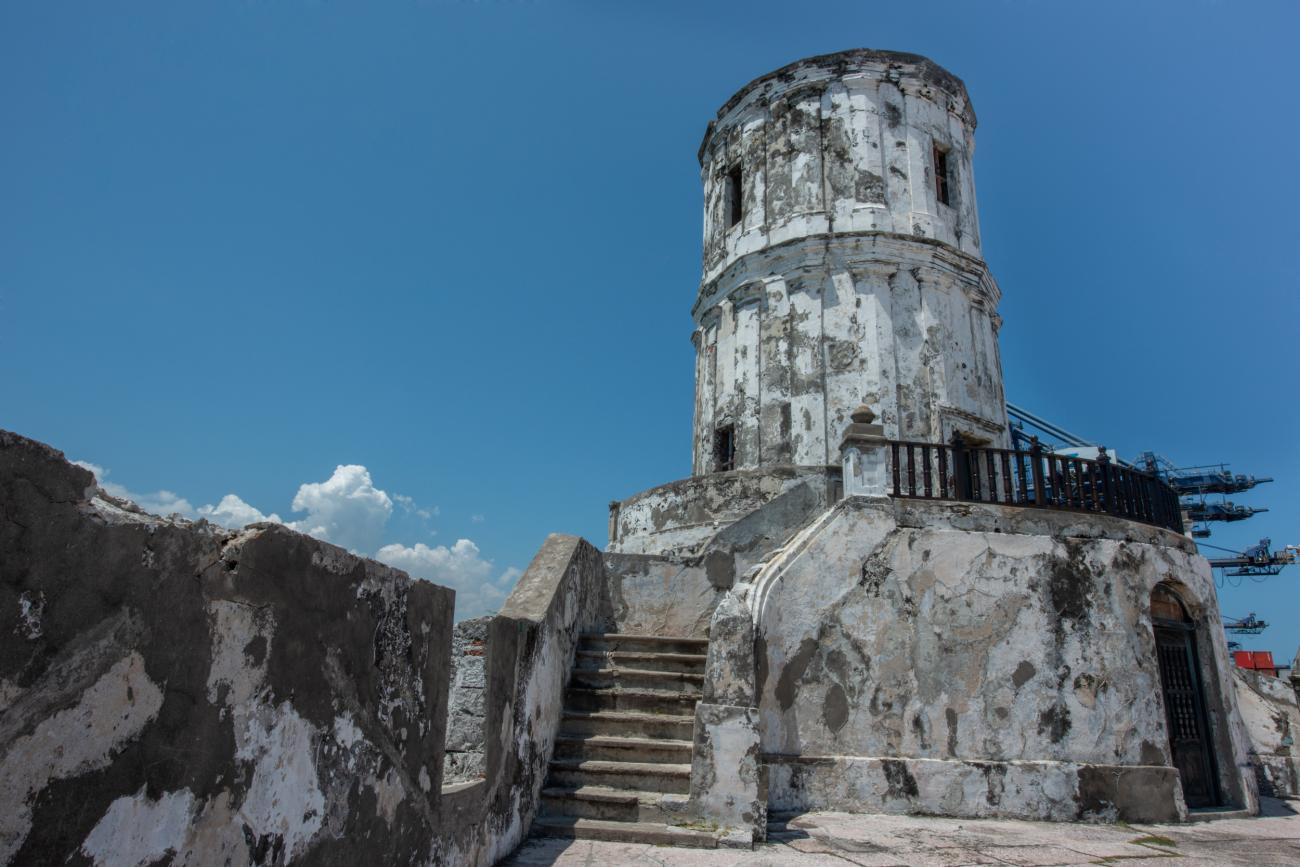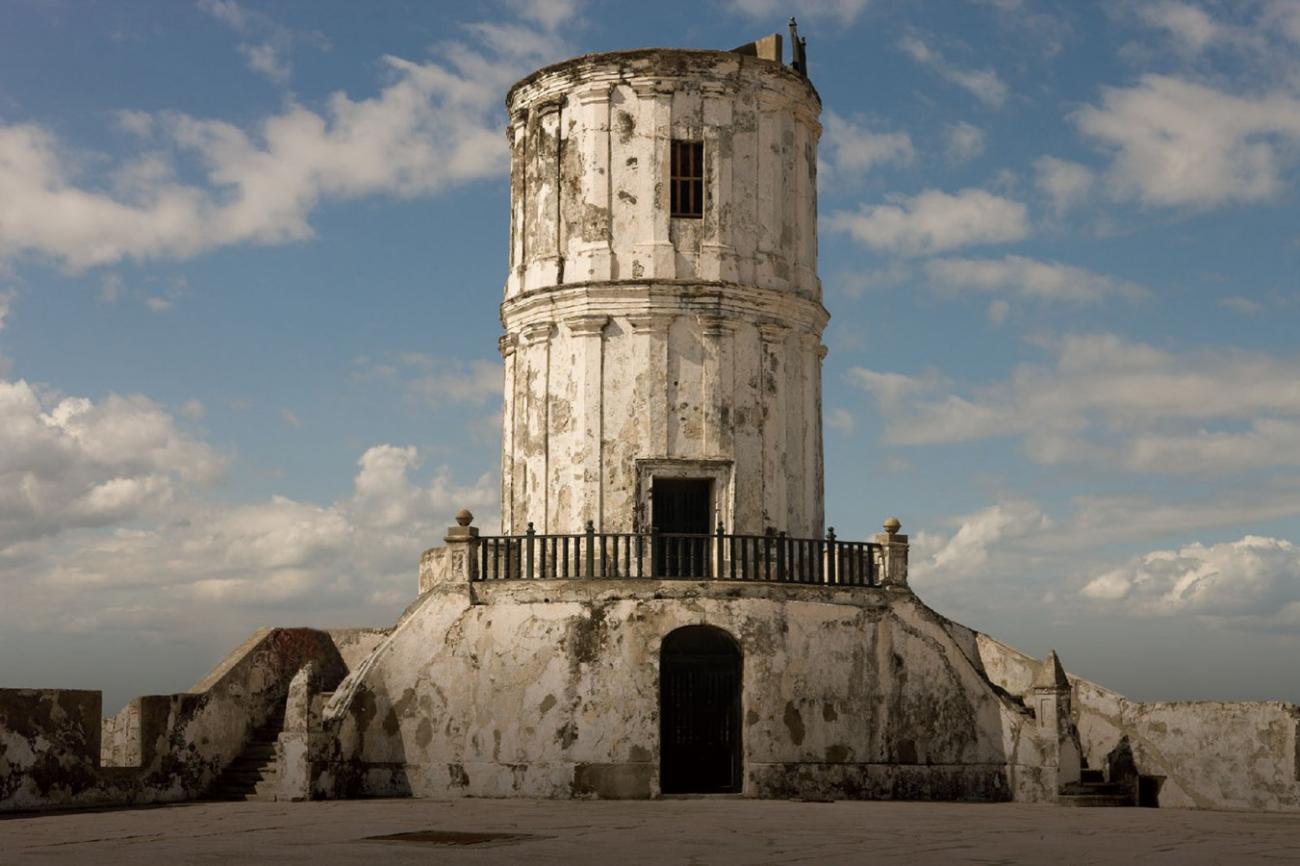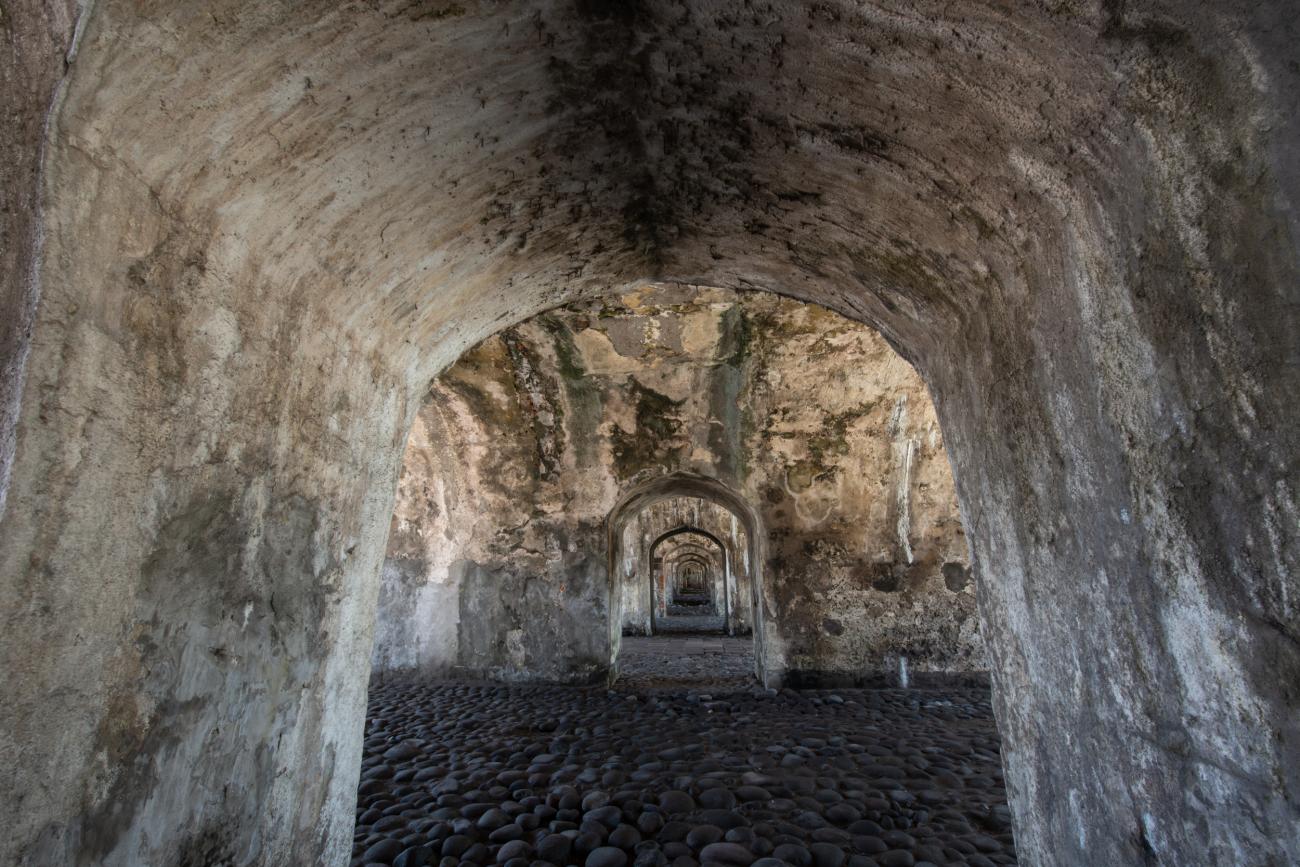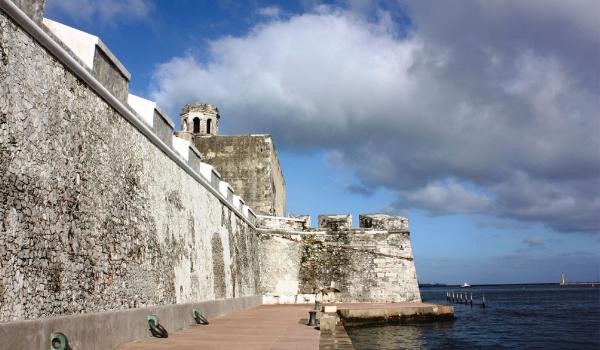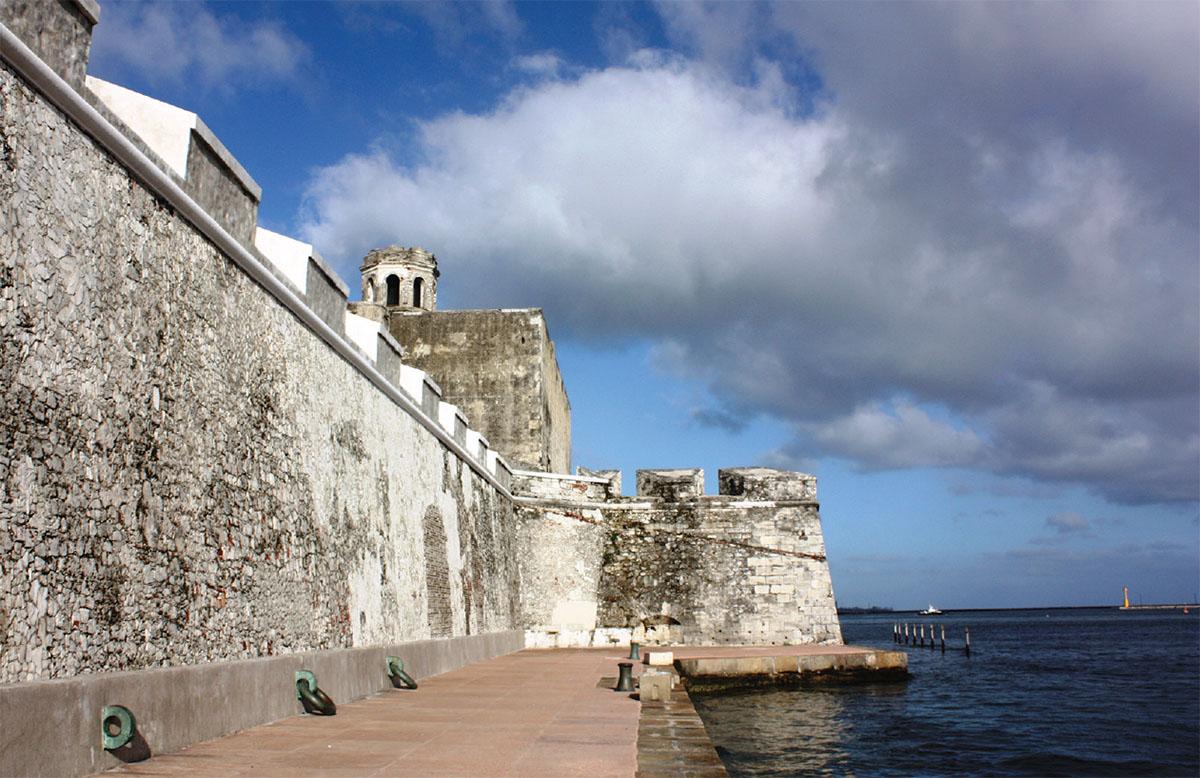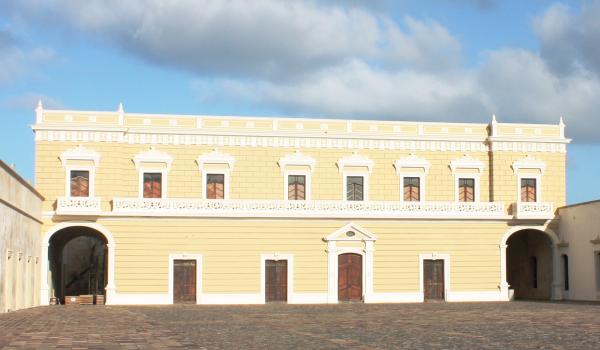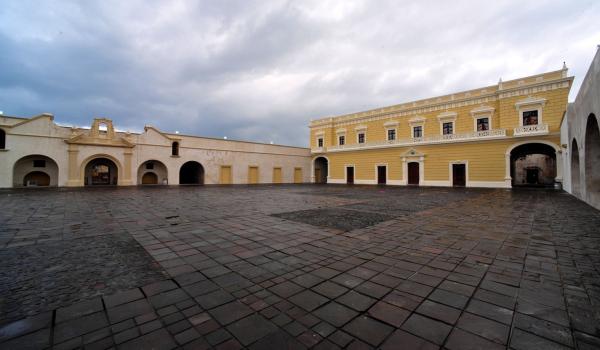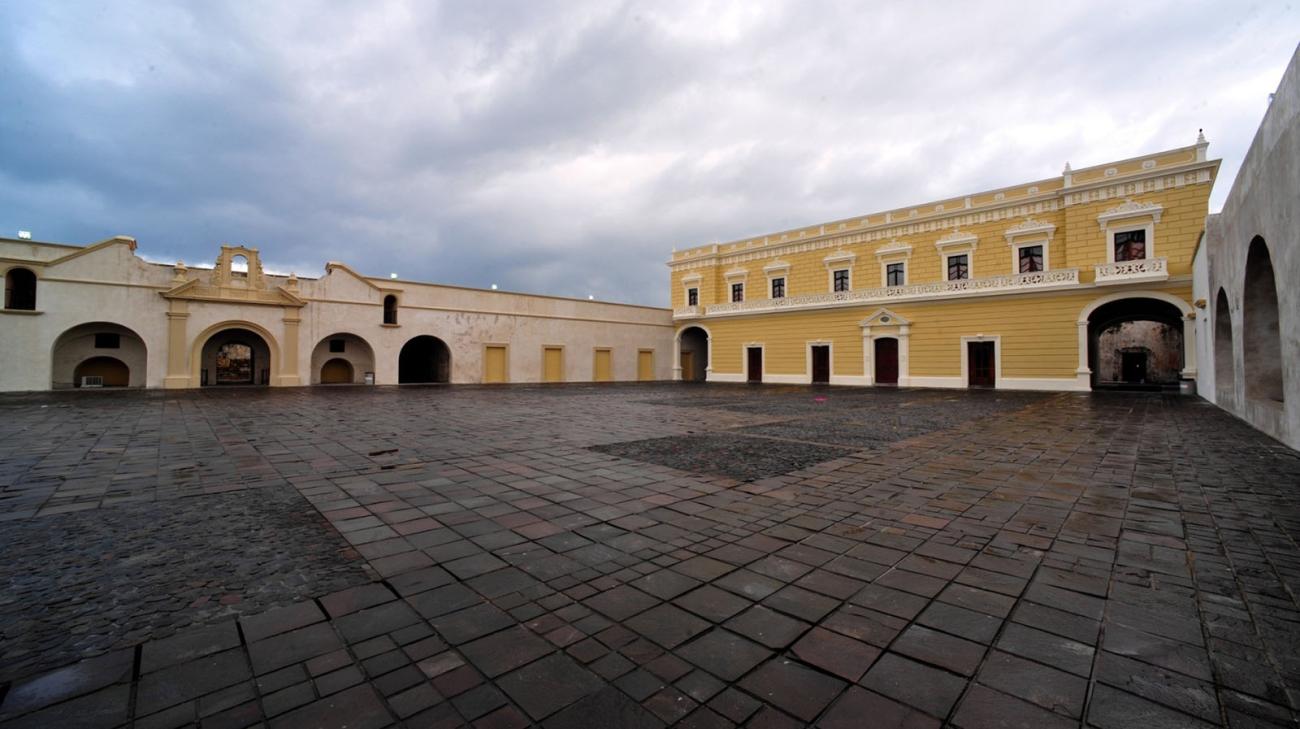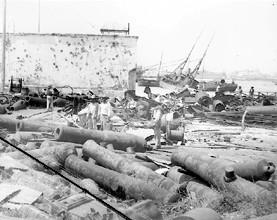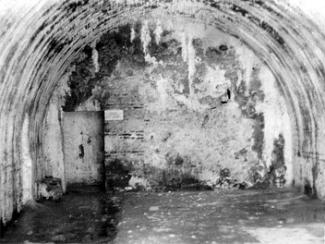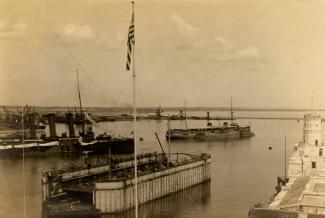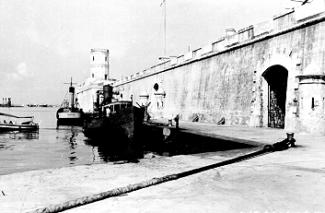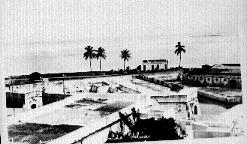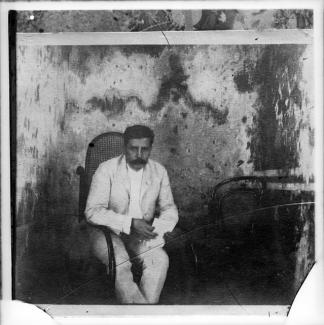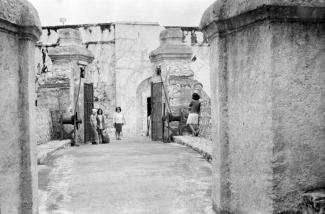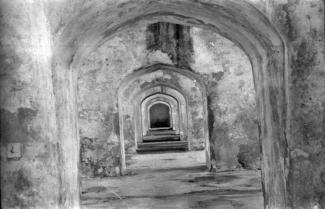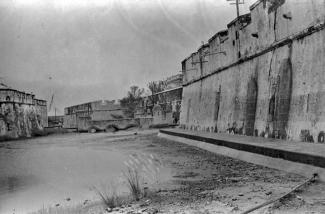The fort of San Juan de Ulúa is an iconic and historic monument of the city of Veracruz: it was in this same area that European and indigenous American cultures began to interact in earnest. The building is considered one of the finest examples of military construction, due to an architectural typology and design that, at the time of its construction, incorporated the latest principles and knowledge of defensive structures.
On the islet of Tecpan Tlayácac—“nose or protrusion of the Land of the Palace”—a shrine was built to honor the god Tezcatlipoca (“smoking mirror”), a Mexica deity and warrior god of darkness. On June 24, 1518—the day of Saint John the Baptist—a Spanish expeditionary force under the command of Juan de Grijalva arrived at this islet to find a temple constructed by the inhabitants of Culúa, hence the name San Juan de Ulúa. The encounter with these inhabitants marked one of the earliest interactions between the two worlds. In 1519, Hernán Cortés reached the coast of Veracruz and began setting up camp opposite the islet. He also founded the settlement of Villa Rica de la Vera Cruz on April 21 of that same year, establishing the first “cabildo” or town council in mainland North America. This site, therefore, marks the spot where the Conquest of Mexico began.
In 1535, New Spain’s first viceroy, Don Antonio de Mendoza, brought with him authorization from Charles I to begin building the port and its defensive constructions on the islet of San Juan de Ulúa. The earliest structures consisted of a wall with mooring rings for attaching the ships and protecting them from the strong northern winds, as well as a tower the height of a man. In 1568 the pirates John Hawkins and Francis Drake arrived at the port of Ulúa from the Caribbean; they entered the bay opposite the islet and moored their vessels, weighed down with the treasures looted from the Caribbean ports.
At the order of Spanish monarch Philip II, in 1590 work began on the design and construction of the “Indian” or Caribbean system of defenses, including San Juan de Ulúa. From that point on, the fort’s typology would be transformed until it became a permanent fortification, an irregularly shaped bastion, which was initially used as a port during the sixteenth and the first half of the seventeenth century, while also a defense for the city of Veracruz, a customs building, a warehouse, and the only dock authorized by the Spanish crown for port activities.
In the nineteenth and the first half of the twentieth century, the facilities were used as the country’s arsenal and penitentiary—its location and architecture were ideally suited for a jail. On July 2, 1915, the president at the time, Venustiano Carranza, decreed that the fort should no longer be used as a prison, though it still remained in the hands of the Ministry of War and the Navy. It was only in 1961 that a presidential order was signed to entrust the building to the National Institute of Anthropology and History (INAH), and over time the fort became one of Mexico’s most historic landmarks open to the public.
A project was launched in 1980 to restore the fort, and this long-term program has gradually borne fruit; 2012 saw the completion of one of the most important phases: the restoration of the Plaza de Armas and the opening of the new site museum in the building known as the Casa del Gobernador, located on the Plaza’s eastern side.
The San Juan de Ulúa site museum has a display of the state of Veracruz’s most important collections of archeological and historical artefacts. The exhibition design has two themes: the Gulf of Mexico area’s archeology, and the history of the fort of San Juan de Ulúa itself. In the archeological exhibition space, the “Gulf Cultures” section consists of a permanent collection of 266 pre-Hispanic items revealing 3,000 years of cultural development of ancient civilizations, from the Olmecs to the Totonacs and the Huastecs. Displays include obsidian and ceramic exhibits, as well as parts of a ballgame court.
The museum describes the fate of the iconic military construction, from the arrival of the Spaniards in 1518, led by Juan Grijalva, to the islet’s transformation for the fort’s construction and the raids launched by pirates on the port of Veracruz during the vice-regal period. Also open to visitors are the cells, corridors, dungeons and courtyards; there is also a collection of sixteenth to nineteenth-century weapons, including suits of armor and a mooring ring.




